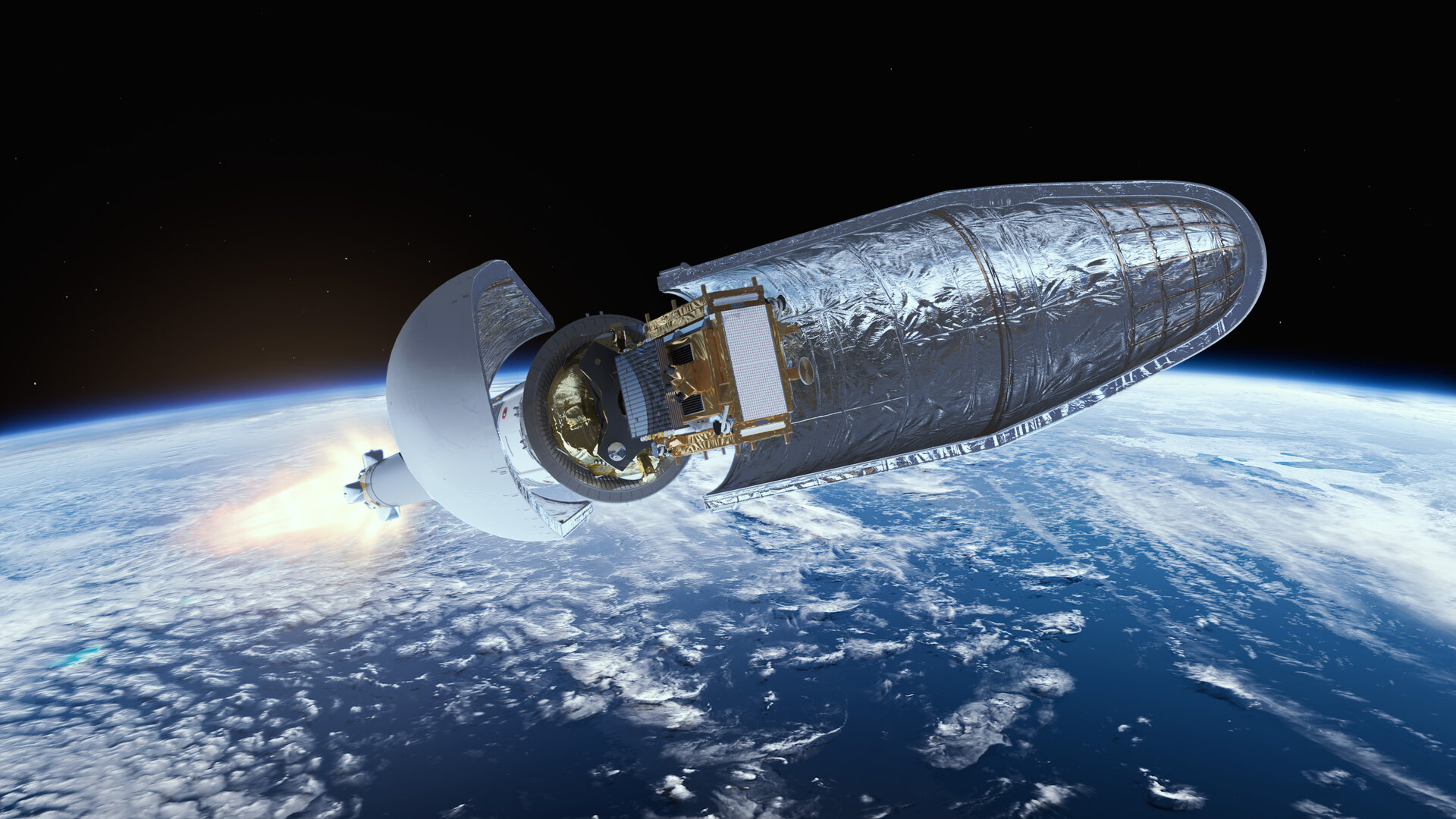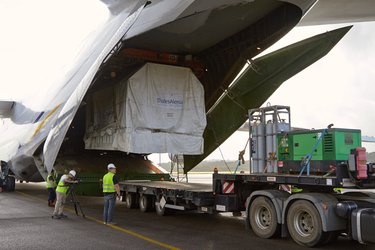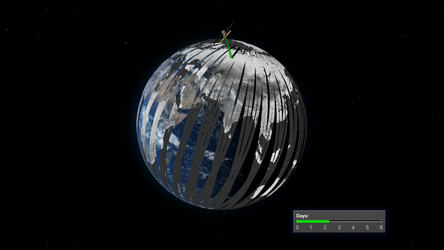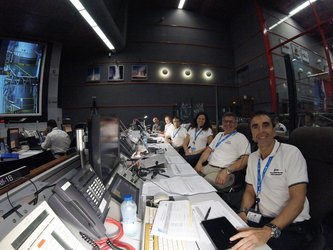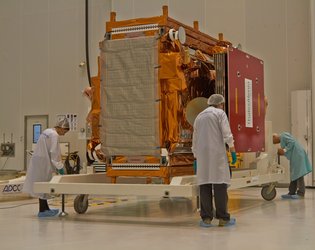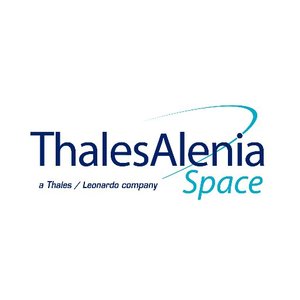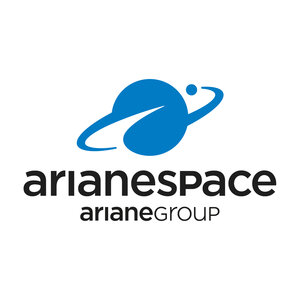Hitching a ride with Sentinel-1B
The Sentinel-1B satellite is now fuelled and ready to join the Soyuz rocket that will take it into orbit on 22 April at 21:02 GMT (23:02 CEST). Once in orbit, it will provide radar images of Earth for Europe’s Copernicus environmental monitoring programme.
With the Sentinel-1 mission designed as a two-satellite constellation, Sentinel-1B will join its identical twin, Sentinel-1A, which was launched two years ago.
By orbiting 180° apart, global coverage and data delivery are optimised for the Copernicus services.
The mission is being used for a multitude of applications to improve everyday life and understand our changing planet, from tracking land subsidence to monitoring ice in polar oceans.
The Sentinel-1B satellite has been at Europe’s Spaceport near Kourou in French Guiana since early March being prepared for liftoff.
These preparations have included charging batteries, checking the multilayer insulation that protects the satellite from the huge temperature changes in space, and also the hazardous task of fuelling.

Now that all these ‘standalone’ activities have been completed, the satellite has been declared ready to start ‘combined operations’.
Although both Sentinel-1 satellites use the same type of Soyuz rocket, this launch is different because other smaller satellites are piggybacking a ride into space.
Three CubeSats are taking advantage of the lift into space. These small satellites, each measuring just 10×10×10 cm, have been developed by university student teams, through ESA’s Education Office ‘Fly Your Satellite!’ programme.
Nicolas Davister and Florian Ricour from the University of Liege, Belgium, said, “Fly Your Satellite! has been a wonderful experience, and joining a big ESA mission like Sentinel-1B on the way to orbit makes it even more exciting.”

Mikael Juhl Kristensen and Anders Kaloer from the University of Aalborg, Denmark, noted, “This is a first big step to working on a satellite like Sentinel-1B one day. Thank you for the piggyback!”
The other is Microscope, from the French space agency CNES, which will test the universality of free fall.
Microscope Mission Director, Olivier Deslandes, said, “After all these years of engineering and science, the Equivalence Principle is ready to face reality in space with Microscope which has just joined Sentinel-1B for the combined operations.”
ESA’s Sentinel-1 Project Manager, Ramón Torres, commented, “Offering the launch possibility to both Microscope and the CubeSats is very gratifying when you see the satisfaction of a team that spent almost fifteen years to complete the development of their satellite, and the extraordinary motivation of group of students realising their dreams.”

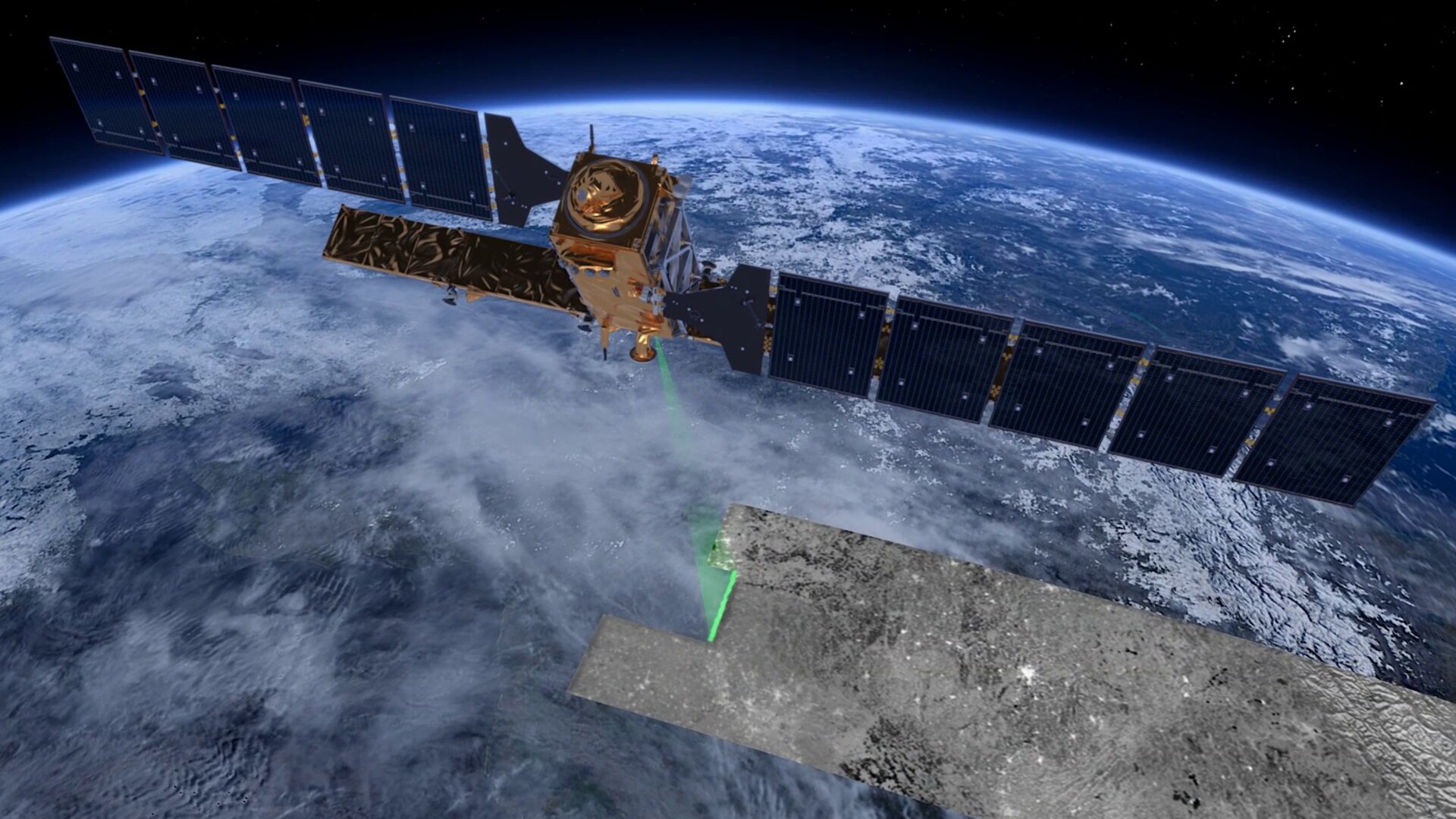
Access the video
At this point in the launch campaign, the different teams are now working together to see their satellites placed on the upper stage of the Soyuz rocket.
Ramón added, “The success of the launch brings success to each mission and the common goal is evident in the day-to-day activities.
“Everyone is very proud of their mission and each team has invited the others to see their satellite.”
Sentinel-1B is now in the capable hands of Arianespace for integration on the launcher and the rest of the preparations for liftoff on 22 April.














 Germany
Germany
 Austria
Austria
 Belgium
Belgium
 Denmark
Denmark
 Spain
Spain
 Estonia
Estonia
 Finland
Finland
 France
France
 Greece
Greece
 Hungary
Hungary
 Ireland
Ireland
 Italy
Italy
 Luxembourg
Luxembourg
 Norway
Norway
 The Netherlands
The Netherlands
 Poland
Poland
 Portugal
Portugal
 Czechia
Czechia
 Romania
Romania
 United Kingdom
United Kingdom
 Slovenia
Slovenia
 Sweden
Sweden
 Switzerland
Switzerland


























